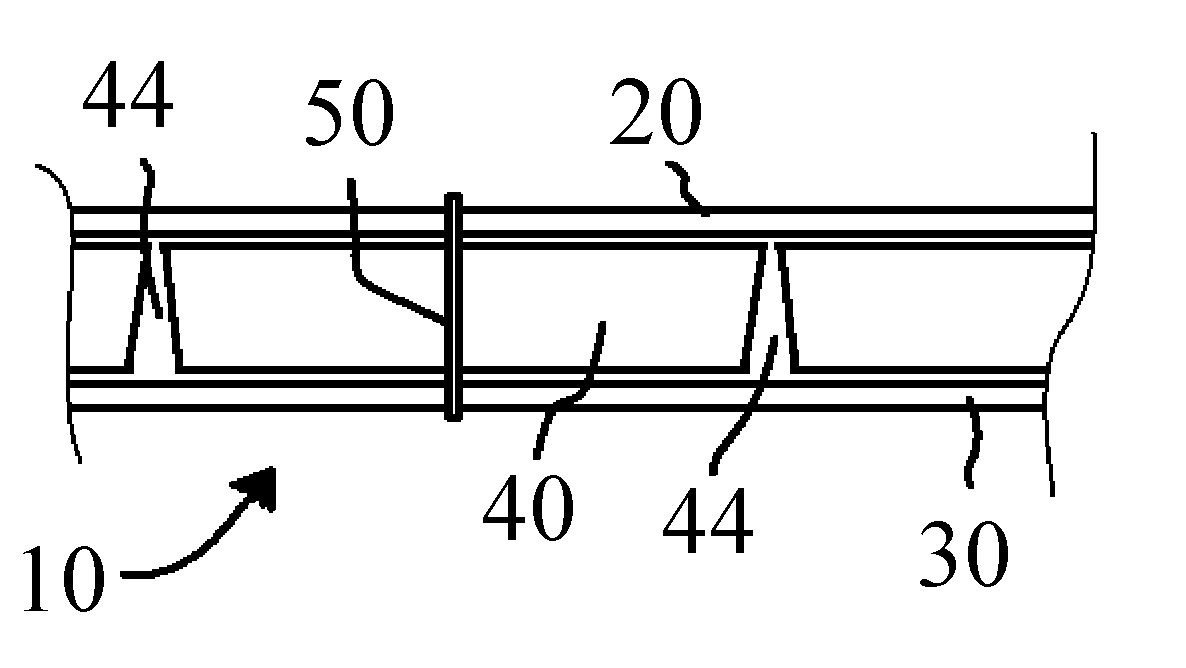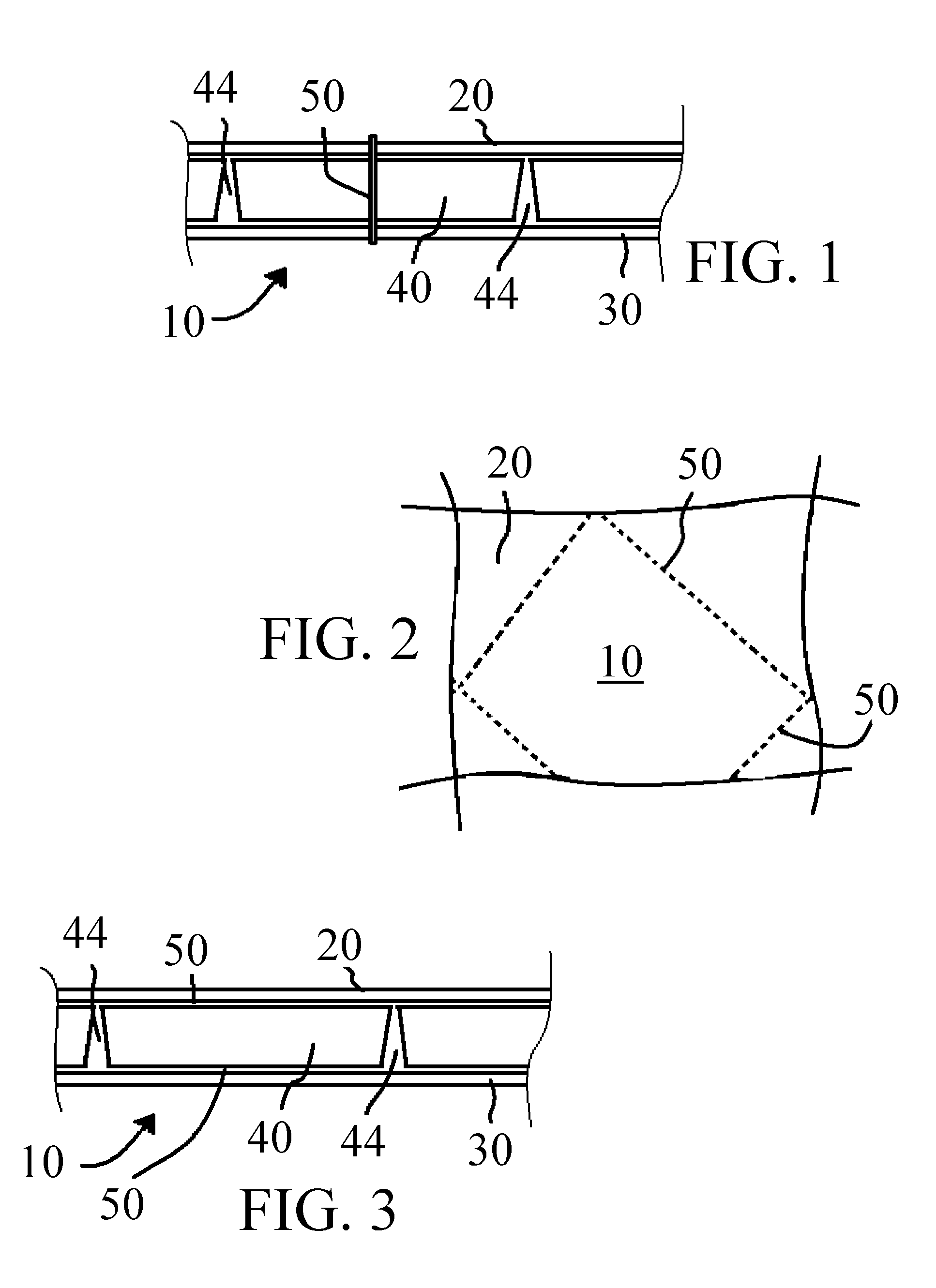Composite Fabric Material and Apparel Made Therefrom
a composite fabric and fabric technology, applied in the direction of overgarments, protective garments, transportation and packaging, etc., can solve the problems of insufficient buoyancy to support a person's weight, thick garments, and heavy products when used in practice, and achieve convenient incorporation, desirable breathability, and effective and efficient
- Summary
- Abstract
- Description
- Claims
- Application Information
AI Technical Summary
Benefits of technology
Problems solved by technology
Method used
Image
Examples
Embodiment Construction
[0026]In summary, the present invention relates to a light weight, breathable, composite fabric 10 with high thermal insulating properties which is provided with three integral sections or layers 20, 30 and 40 as described below. The composite fabric 10 according to the present invention will provide a textile with exceptional buoyancy, cold-resistant and water-resistant properties while providing acceptable breathability to the composite fabric and providing a fabric which can be easily handled by conventional textile manufacturing processes.
[0027]The composite fabric 10 has, in one embodiment, a total thickness of about 30-35 mils or about 0.80 millimeters, and generally has a total thickness of 15-50 millimeters. The composite fabric 10 can be cut to shape and attached to essentially any outer textile fabric in any conventional fashion, such as stitching or the like. The composite fabric 10 can form an efficient and effective inner drop liner for apparel. The composite fabric has...
PUM
| Property | Measurement | Unit |
|---|---|---|
| Thickness | aaaaa | aaaaa |
| Thickness | aaaaa | aaaaa |
| Thickness | aaaaa | aaaaa |
Abstract
Description
Claims
Application Information
 Login to View More
Login to View More - R&D
- Intellectual Property
- Life Sciences
- Materials
- Tech Scout
- Unparalleled Data Quality
- Higher Quality Content
- 60% Fewer Hallucinations
Browse by: Latest US Patents, China's latest patents, Technical Efficacy Thesaurus, Application Domain, Technology Topic, Popular Technical Reports.
© 2025 PatSnap. All rights reserved.Legal|Privacy policy|Modern Slavery Act Transparency Statement|Sitemap|About US| Contact US: help@patsnap.com


